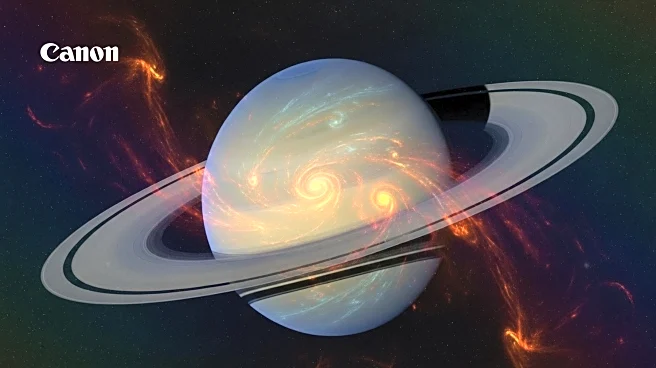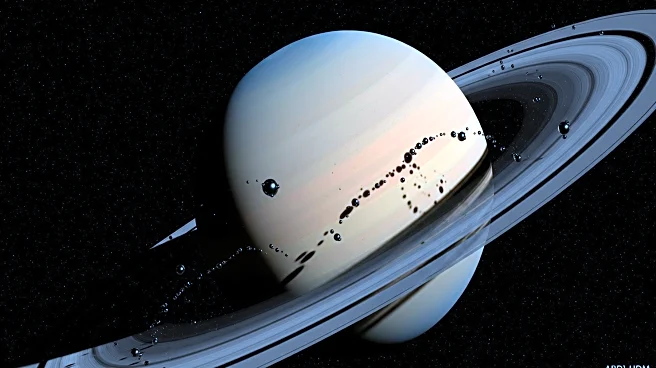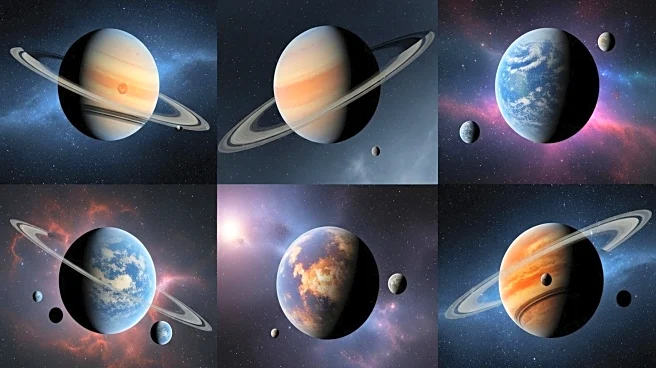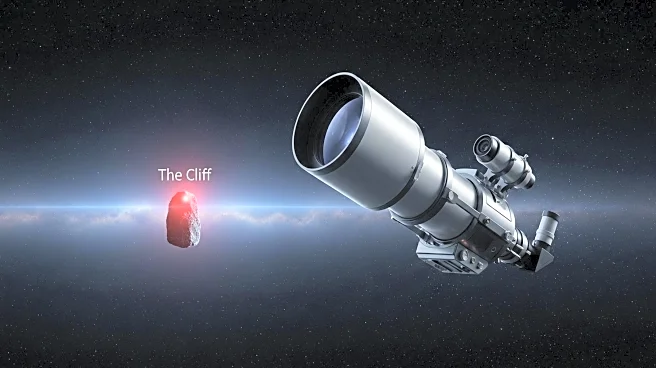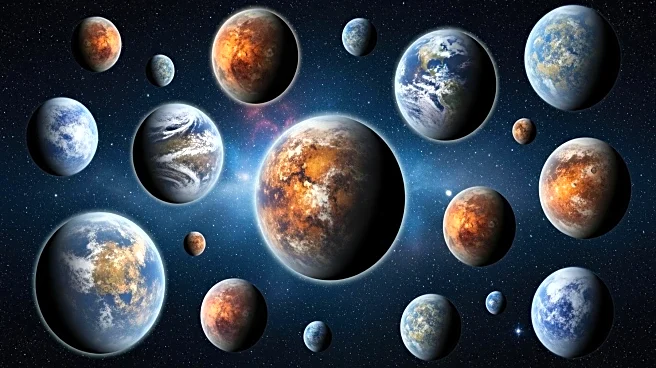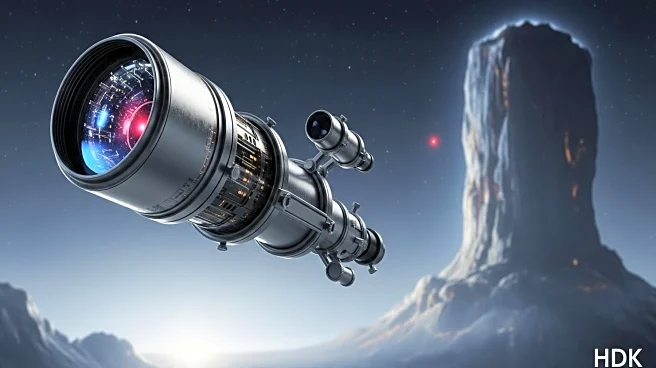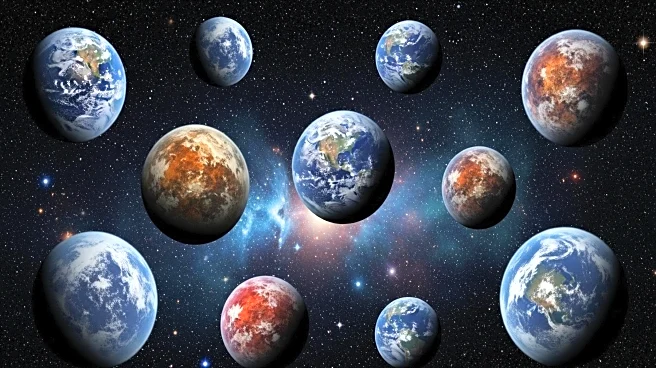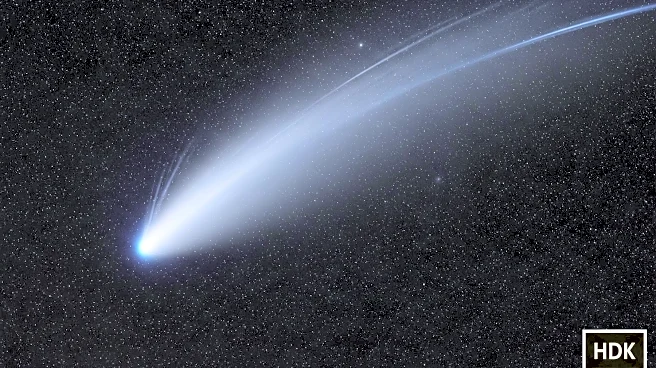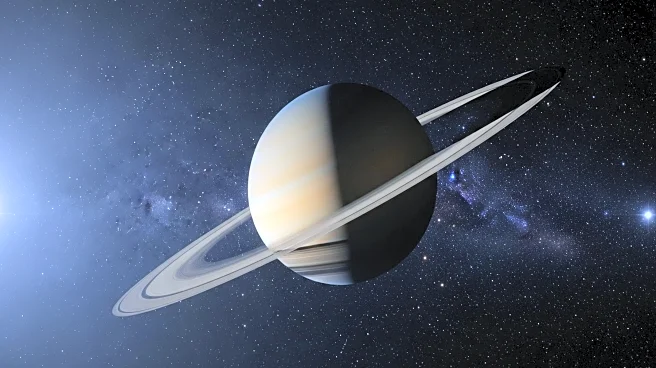What's Happening?
The James Webb Space Telescope (JWST) has uncovered new and complex features in Saturn's atmosphere, including dark, bead-like structures within bright auroral halos and an asymmetric star-shaped feature near the north pole. These observations were made during a continuous 10-hour observation period, revealing details previously unseen on any planet. The findings suggest a possible interconnectedness between different atmospheric layers, potentially linked to Saturn's famous hexagonal storm pattern. The study, led by Tom Stallard of Northumbria University, was presented at the EPSC-DPS2025 Joint Meeting in Helsinki and published in Geophysical Research Letters.
Why It's Important?
These discoveries could significantly enhance our understanding of atmospheric dynamics on gas giant planets. The unexpected features observed by JWST may provide insights into the energy exchange driving Saturn's aurora and reveal unknown atmospheric processes. The ability to observe these structures with JWST's sensitivity marks a breakthrough in studying Saturn's upper atmosphere, which has been challenging due to weak emissions. Understanding these phenomena could have broader implications for planetary science and the study of similar atmospheric processes on other gas giants.
What's Next?
The research team hopes to conduct follow-up observations with JWST to further explore these atmospheric features, especially as Saturn's orientation to the Sun changes during its equinox. This period of seasonal change may alter the structures observed, providing additional data to understand the underlying causes. Continued observations could help clarify whether the features are interconnected or coincidental, offering deeper insights into Saturn's atmospheric dynamics.

